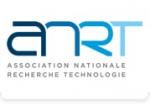Multi-Fidelity Methods with Heterogeneous Inputs
| ABG-134522 | Master internship | 6 months | around 600€ |
| 2025-11-24 |
- Mathematics
- Engineering sciences
Employer organisation
Website :
The work of the PhD candidate will be supervised by P.M. Congedo, E. Denimal Goy and Olivier Le Maître, experts in uncertainty quantification methods.
The work will be conducted in the Platon team, a joint research group between Ecole Polytechnique and CNRS, hosted by the Center for Applied Mathematics (CMAP) of ´Ecole Polytechnique. The Platon project-team focuses on developing innovative methods and algorithms for uncertainty mangament in numerical models, including advanced calibration strategies from data (observations, measurements, other model predictions) and uncertainty reduction.
Description
Context
Many engineering problems involve complex physical phenomena that are difficult, if not impossible, to reproduce experimentally. In addition, experimental campaigns are often extremely expensive in terms of resources. In this perspective, numerical simulation plays an essential role in virtually predicting system behavior.
However, in many practical situations, especially in multi-physics systems involving strong coupling between physical processes, a single, high-fidelity simulation of the full system is either unfeasible or too costly to be performed repeatedly (e.g. for optimization, uncertainty quantification, or control). Therefore, simplified or surrogate models are typically introduced to obtain predictions quickly. An example is the simulation of hemodynamics problems in medicine.
However, in many practical situations, especially in multi-physics systems involving strong coupling between physical processes, a single, high-fidelity simulation of the full system is either unfeasible or too costly to be performed repeatedly (e.g. for optimization, uncertainty quantification, or control). For instance, in computational hemodynamics, the detailed simulation of blood flow in patient-specific arterial networks requires the solution of the three-dimensional, time-dependent Navier-Stokes equations, often coupled with models of vessel wall elasticity and inflow/outflow boundary conditions derived from clinical measurements. Such high-fidelity simulations can provide extremely accurate insights into local flow features (e.g. wall shear stress, pressure gradients, or recirculation zones), but they are computationally expensive, often requiring several hours or days on large-scale computing facilities, and therefore impractical for tasks such as parameter calibration, uncertainty quantification, or real-time decision support. In this context, simplified or surrogate models (e.g. one-dimensional network models, reduced-order or data-driven surrogates) are typically introduced to obtain fast and reasonably accurate predictions of the hemodynamic behavior.
A major scientific challenge consists in efficiently combining information from models with different levels of fidelity in order to improve prediction accuracy while keeping computational cost reasonable. This is the aim of multi-fidelity modeling.
Multi-Fidelity Methods: State of the Art
Multi-fidelity (MF) methods exploit the correlation between low-fidelity and high-fidelity models to reduce the number of expensive evaluations needed for prediction or optimization. A classical statistical approach is the co-Kriging model introduced by Kennedy and O'Hagan [1], where Gaussian process regression links different model fidelities through an autoregressive structure. Extensions have been proposed in Bayesian frameworks [2], multi-fidelity neural networks [3], and physics-informed learning [4].
Despite these advances, an open issue concerns heterogeneity between models: inputs and outputs may not belong to the same physical or numerical space, preventing direct application of standard MF techniques. This heterogeneity may stem from differences in spatial discretizations, parametrizations, or boundary condition formulations.
Objectives and Work Plan
This internship addresses the problem of heterogeneous inputs in multi-fidelity modeling. The student will first review the literature on multi-fidelity methods and surrogate modeling to understand existing formulations and their limitations in heterogeneous settings. Then, a simple benchmark involving low- and high-fidelity models with mismatched input spaces will be developed. The main task will be to design and test strategies to align or embed these input spaces (e.g. via kernel mappings, autoencoders, or canonical correlation analysis) within a multi-fidelity framework such as co-Kriging or multi-fidelity neural networks. The proposed approach will be validated on synthetic examples, and its performance assessed in terms of accuracy, robustness, and computational efficiency.
Bibliography
[1] M. C. Kennedy and A. O'Hagan, Predicting the output from a complex computer code when fast approximations are available, Biometrika, 87(1), (2000).
[2] P. Perdikaris, M. Raissi, and G. E. Karniadakis, Nonlinear information fusion algorithms for data-efficient multi-fidelity modeling, Proc. Roy. Soc. A, 473(2198):20160751 (2017).
[3] X. Meng and G. E. Karniadakis, A composite neural network that learns from multi-fidelity data: Application to function approximation and inverse PDE problems, JCP, 401, 109020 (2020).
[4] M. Raissi, P. Perdikaris, and G. E. Karniadakis, \emph{Physics-informed neural networks: A deep learning framework for solving forward and inverse problems involving nonlinear PDEs}, J. Comput. Phys., 378:686707 (2019).
Profile
Candidates should be enrolled in a Master’s program in engineering, applied mathematics or a related discipline, and a specialization in machine learning, uncertainty quantification, optimization or related fields.
The 6-months internship may be followed by a PhD thesis funded through the Meditwin project, which is devoted to the development of digital twins for healthcare applications. Applicants should submit a CV, a covering letter as a single document detailing the knowledge, skills and experience you think make you the right candidate for the job, a list of your MSc courses and grades. For further details and applications, please contact PM Congedo (pietro.congedo [at] inria.fr).
Starting date
Vous avez déjà un compte ?
Nouvel utilisateur ?
Get ABG’s monthly newsletters including news, job offers, grants & fellowships and a selection of relevant events…
Discover our members
 MabDesign
MabDesign  CASDEN
CASDEN  SUEZ
SUEZ  Laboratoire National de Métrologie et d'Essais - LNE
Laboratoire National de Métrologie et d'Essais - LNE  Aérocentre, Pôle d'excellence régional
Aérocentre, Pôle d'excellence régional  Institut Sup'biotech de Paris
Institut Sup'biotech de Paris  Généthon
Généthon  Nokia Bell Labs France
Nokia Bell Labs France  PhDOOC
PhDOOC  Groupe AFNOR - Association française de normalisation
Groupe AFNOR - Association française de normalisation  Tecknowmetrix
Tecknowmetrix  CESI
CESI  Ifremer
Ifremer  Servier
Servier  TotalEnergies
TotalEnergies  ONERA - The French Aerospace Lab
ONERA - The French Aerospace Lab  ASNR - Autorité de sûreté nucléaire et de radioprotection - Siège
ASNR - Autorité de sûreté nucléaire et de radioprotection - Siège  MabDesign
MabDesign  ADEME
ADEME  ANRT
ANRT

